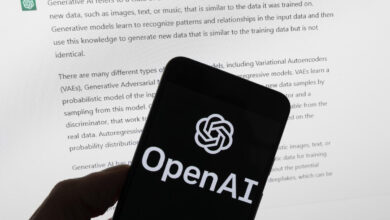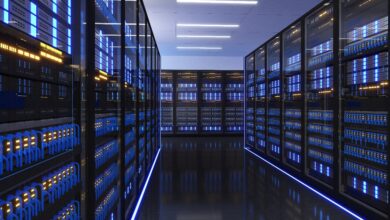Generative AI is Coming to a School Near You: A Reflection from the Field

Matt Montemurno, hailing from the vibrant state of New Jersey and currently navigating the bustling corridors of Washington DC as a dedicated non-profit and software sales representative during the day, while donning my consultant hat by night. His professional journey offers a unique vantage point, delving deep into the dynamics of private and public schools, dissecting district-by-district purchasing prowess, and unraveling the intricacies of state-mandated regulatory landscapes. With a steadfast focus on the K12 sector, he extends his expertise to encompass higher education realms and innovative adult learning methodologies. Complementing this, his academic pursuits culminated in a Master’s degree centered on the pivotal domain of distance learning. Within Matt’s repertoire of insights, he brings forth a wealth of product-specific acumen spanning purchasing strategies, counseling paradigms, alumni engagement methodologies, curriculum enhancements, classroom applications, and strategic collaborations with superintendent’s offices. This amalgamation of experiences and expertise forms the cornerstone of his contributions to the education landscape, driving impactful transformations and fostering enduring educational excellence.
Generative Artificial Intelligence (GenAI) has made remarkable advancements across various industries, particularly in K12 education. This new technology has sparked a wave of curiosity and anxiety among educators as we approach the upcoming school year.
GenAI promises to revolutionize personalized teaching and learning and foster creative content generation. However, this enthusiasm is tempered by growing concerns related to ethics, data privacy, and the digital divide. The ethical implications of deploying GenAI in education, including transparency, accountability, and fairness issues, require careful consideration. Data privacy is another critical concern. The integration of GenAI necessitates collecting and processing vast amounts of student information, which must be protected against misuse. Additionally, the digital divide presents a considerable challenge.
Given these opportunities and challenges, how can educators adequately prepare for GenAI’s imminent arrival?
By taking proactive and strategic measures, educators can maximize GenAI’s benefits while mitigating its risks.
This involves rigorous professional development and training for teachers to ensure they can effectively utilize GenAI tools in the classroom. School systems must also establish robust data governance frameworks to protect student privacy and ensure compliance. Moreover, promoting equitable school-building access to technology is crucial, ensuring that all students, regardless of their socio-economic background, can benefit from GenAI-enhanced learning experiences.
Furthermore, collaboration with stakeholders—including policymakers, technology developers, and the broader community—is essential to developing and implementing policies that align with school system goals. By fostering a comprehensive and inclusive approach, educators can ensure that the integration of GenAI into schools enhances educational outcomes and upholds the principles of responsibility, equity, and integrity.
In the evolving landscape of education technology, systems are revolutionizing content creation by crafting new material based solely on patterns and data. Fueled by the rise of extensive language modeling (LLM), which can understand and mimic human-like text, this innovation is gaining momentum. But what does this cutting-edge technology mean for school systems nationwide? These district leaders are navigating a landscape of autonomy, scant oversight, and little guidance from the Department of Education(DoEd).
So, what is the DoEd saying?
The DoEd, through its Office of Educational Technology{https://tech.ed.gov/ai/}, is developing policies to ensure the effective, safe, and fair use of GenAI in education across the country. They aim to enhance educational outcomes while protecting the well-being and privacy of students. This includes creating guidelines for ethical GenAI implementation and offering resources to help schools integrate GenAI technology.
In this context, the DoEd urges educators to take on leadership roles and align infrastructure with market and policy trends. However, the provided guidance lacks actionable specifics, leaving state offices and district leaders responsible for coordinating comprehensive reviews with instructional technology, information technology, and teaching staff.
This is no easy task.
While GenAI strives to automate goal-reaching processes, it’s imperative that educators, rather than GenAI itself, define these objectives. Educators’ vision of effective teaching and insights into students’ strengths and weaknesses should be the driving force behind goal-setting.
GenAI can enhance the classroom experience for teachers and students. With a few simple online tools from current education partners like Google Classroom and Microsoft Copilot or new partners like Magic School AI, SchoolAI, and ChatforSchools.com, any school system can begin using GenAI today.
A recent discussion with a district leader concerning GenAI began with the question: “What free GenAI services could I begin using today?”
In response, starting with free services is an excellent initial step in the research process. However, solutions specifically designed for classroom enablement would be more beneficial for classroom implementation. These solutions provide the structure and safety teachers need.
GenAI can help with classroom tasks that all systems need. These tasks range from personalized learning to new content creation and even diverse language learning without the need for an increase in budget or specialized headcount. These three items can be tested internally or piloted within classrooms as the district adapts.
I have worked with many leaders in the IT education space who are weary of new technology for education, like GenAI, as this new technology touches the hands of every single person, including their staff and students. Furthermore, many technology offices do not have GenAI expertise in-house and are still in the experimental stages of their classroom devices.
A recent discussion with a district leader centered on concerns regarding the implementation of GenAI and the services available to support this process, particularly regarding data security.
The question was: What services are available to assist with implementation and ensure data security?
My recommendation was that district leaders collaborate with existing software vendors and other partner companies to pilot GenAI within their district. These pilot programs would enable district leaders to assess and manage potential risks directly and review data security protocols (e.g., PII filtering, on / off switches, student chat history, moderation filters, misuse notifications, and disallowing student data to train LLMs).
There are many challenges to the best classroom execution, but they all boil down to three key areas: ethics, data privacy, and the digital divide. Each of these challenges relates to the biggest concern regarding GenAI—that it will erode the teacher-student relationship. This erosion will be driven by a singular factor: introducing a new expert in the classroom.
This expert, powered by GenAI, can respond in under three seconds, offer personalized one-on-one guidance, and possess intelligence that encompasses all the knowledge provided and learned by the GenAI host rather than being limited to the resources of the school system, content providers, or the DoEd.
Addressing these challenges requires collaboration among educators, policymakers, technologists, and the community to ensure that GenAI enhances education while maintaining integrity and inclusivity.
Making a difference with GenAI requires a multifaceted approach encompassing technical, ethical, and educational considerations. Key recommendations include comprehensive teacher training, seamless curriculum integration, and transparency in GenAI use. Fostering collaboration among stakeholders, establishing robust feedback mechanisms, engaging the community, and conducting ongoing research and evaluation are also essential for effective implementation. The community’s presence is unmistakable, marked by robust collaboration with leaders in Information Technology, Cybersecurity, and GenAI.
Integrating Generative AI into schools presents significant and promising opportunities for enhancing educational outcomes, fostering innovation, and preparing students for a technologically advanced future. However, it is equally imperative to scrutinize its potential downsides rigorously. This includes addressing concerns related to data privacy, algorithmic bias, and the digital divide. Only through a comprehensive and critical examination can we ensure that Generative AI is implemented in a manner that is both responsible and equitable, safeguarding the well-being of all students and maintaining the integrity of the educational process.
**This opinion editorial was crafted WITHOUT the assistance of any Generative AI tool**



